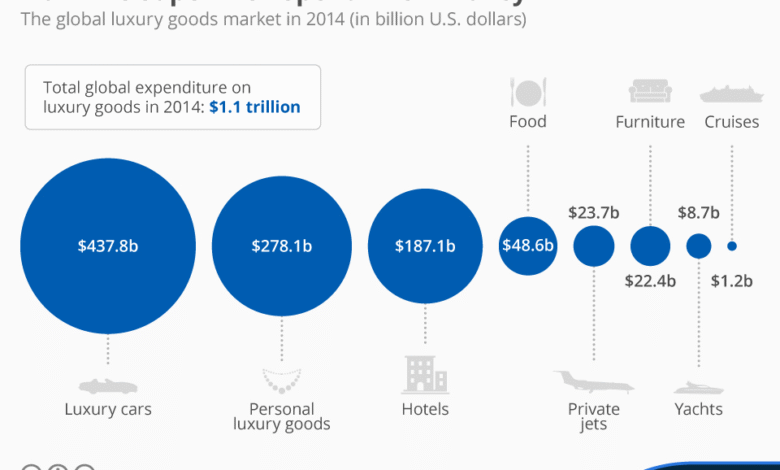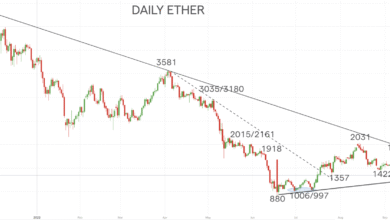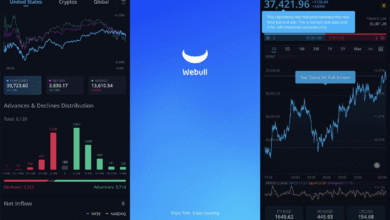Wealthy Consumer Spending Rises While Others Cut Back

Wealthy consumer spending is experiencing a notable surge, even as the broader American population tightens its purse strings to accommodate rising costs. This disparity highlights a fascinating shift in economic behavior, where affluent consumers continue to indulge in luxury spending, from fine dining to extravagant travel experiences. While lower-income individuals focus primarily on essential purchases amidst ongoing inflation concerns, the wealthy are maintaining and even ramping up their discretionary expenditures. As credit card trends reveal a striking contrast—an uptick in spending among high-credit consumers versus declines in lower-income brackets—it’s clear that economic impacts are differently felt across socioeconomic lines. As we venture into consumer trends of 2025, understanding the dynamics of wealthy households could provide valuable insights into the fluctuating landscape of luxury and credit usage.
The realm of affluent spending has gained significant attention, especially as economic uncertainties unfold. High-net-worth individuals, often defined by their extravagant consumption habits, appear insulated from broader economic downturns, opting instead to continue their lavish lifestyles. This behavior contrasts sharply with the more frugal habits of lower-income earners, who are adjusting to prioritize necessary expenditures. The current consumer landscape showcases a clear divide, highlighting how different economic forces, such as inflation and tariffs, can uniquely impact various classes of shoppers. As we analyze shifts in financial habits, it becomes increasingly important to monitor how these affluent demographics influence market trends and economic resilience.
The Surge in Wealthy Consumer Spending
In the most recent quarter, affluent consumers have demonstrated a remarkable willingness to spend, defying broader economic trends. While lower-income households are tightening their belts and curbing discretionary purchases, luxury spending among the wealthy has seen a significant upswing. According to reports from leading credit card companies, affluent customers are focusing their financial resources on premium experiences, from gourmet dining to extravagant travel. This sharp contrast in consumer behavior highlights a society increasingly divided along economic lines, with wealthier individuals benefiting from greater financial security.
The spending spree by wealthy consumers is indicative of shifting consumer trends as we move deeper into 2025. As luxury spending continues to rise, brands that cater to the affluent market stand to gain significantly. Economic indicators suggest that despite potential downturns in other sectors, high-income earners are likely to maintain their penchant for indulgence. This trend can be attributed to an overall sense of confidence among affluent consumers, who are increasingly prioritizing quality and experience over price.
The Impact of Economic Factors on Consumer Spending
The economic landscape significantly influences consumer spending, particularly among varied income brackets. Tariffs and inflation concerns have prompted lower-income segments to reassess their purchasing priorities, resulting in lowered spending on non-essential items. Conversely, wealthy consumers, insulated from the pressures of credit card debt and financial instability, continue to invest in luxury goods and services. Analysts indicate that this bifurcation could potentially shape the retail market, with luxury brands thriving in an environment where economic uncertainty constrains lower-income consumers.
As inflation impacts purchasing power, it’s important to analyze its differential effects across various socioeconomic groups. Affluent consumers are less likely to alter their spending habits, as seen in their continued investment in dining and travel. This resilience can be attributed to their higher credit scores and disposable income, which afford them flexibility amidst changing economic conditions. However, the growing disparity in spending behaviors raises questions about long-term sustainability and the overall health of consumer spending as a driver of economic growth.
The Divide: Affluent vs. Lower-Income Consumers in 2025 Trends, Evaluating the Effect of Credit Card Debt on Spending Patterns
Credit card debt has become a significant factor affecting consumer behaviors, especially amid rising inflation rates. Recent data shows an increase in the proportion of credit card users who are making only minimum payments, highlighting financial strain among lower-income consumers. In contrast, affluent individuals are less encumbered by debt and wallet anxiety, translating to a healthy appetite for luxury expenditures. This divergence in financial stability not only influences individual spending patterns but also shapes overarching economic trends.
Moreover, as affluent consumers navigate their spending without the burden of credit card debt, they are expected to remain pivotal in the luxury market’s growth. This group isn’t just purchasing high-end items; they are patronizing experiences that reflect their status and lifestyle choices, driving higher revenue for luxury brands. As wealth disparity continues to expand, understanding this divide can offer valuable insights for businesses aiming to cater to both ends of the consumer spectrum, ensuring they meet the needs of each demographic adequately.
Consumer Trends for 2025: What Lies Ahead?
As we move toward 2025, understanding consumer trends becomes essential for businesses aiming to succeed in fluctuating markets. Sociocultural factors will continue to shape preferences, particularly as younger generations gain purchasing power. Wealthy consumer segments will likely drive the luxury market narrative, characterized by a demand for authenticity, sustainability, and exclusive experiences. Brands that adapt to these shifting preferences will thrive, capturing the attention of affluent consumers eager to align their purchases with personal values.
This looming change in consumer trends will impact how businesses strategize their offerings. Predictions indicate that luxury spending will not only persist but will also evolve toward experiences that reflect a consumer’s lifestyle and identity. By leveraging data on affluent consumer behavior and preferences, brands can craft targeted marketing strategies that resonate with their audience. Those who recognize and adapt to these emerging trends in 2025 will position themselves for sustained success in the ever-changing landscape of consumer spending.
Luxury Spending in the Current Economy
Luxury spending serves as an important barometer for broader economic health, especially in turbulent times. The willingness of wealthy consumers to spend on luxury items—even as the economy faces potential recessions—indicates their financial resilience. Reports have shown an uptick in high-end purchases, particularly in areas like fine dining and exclusive travel, showcasing that the affluent mindset remains largely untouched by economic uncertainties. This behavior not only reflects their confidence but also provides a cushion for various sectors of the retail market.
It is crucial, however, to analyze how external economic factors might eventually temper luxury spending. An extended period of inflation could alter the affluent consumer landscape, potentially leading to more cautious spending habits even among wealthier individuals. Nonetheless, for the present, luxury brands can expect a robust market driven by the desires and economic capabilities of high-income earners, navigating their purchase decisions in a manner that aligns with their lifestyle aspirations.
The Role of Credit Card Providers in Influencing Spending
Credit card providers play a significant role in shaping consumer spending behaviors, particularly among affluent clientele. Lenders catering to wealthier customers regularly report higher spending patterns, often linked to reward systems and exclusive offers tailored for high earners. This relationship not only encourages luxury spending but also fosters brand loyalty as affluent consumers seek to maximize their rewards through strategic purchases. For companies like American Express and JPMorgan Chase, their focus on affluent markets translates to innovative offerings that enhance consumer satisfaction.
The trends in credit card debt—especially among lower-income groups—demonstrate stark contrasts in financial health. While some consumers grapple with debt by limiting spending, the affluent capitalize on credit resources to fund indulgent purchases. This dynamic presents a unique opportunity for credit issuers; by promoting responsible spending and highlighting benefits of higher-tier credit offerings, they can continue to attract affluent clients who prioritize luxury and premium experiences over mere transactional purchases.
Understanding Affluent Consumers: Behavior and Trends
Affluent consumers exhibit unique traits that set them apart from lower-income segments, particularly in their spending habits and purchasing priorities. While the latter have shifted focus primarily to essentials, affluent individuals remain interested in luxury goods, experiences, and services that enhance their lifestyles. This behavioral distinction is further evidenced by their spending on non-essentials, where they continue to favor high-quality products, luxurious vacations, and exclusive dining experiences. Understanding these behaviors is essential for marketers aiming to connect with high-income consumers.
Shopping trends amongst affluent customers provide valuable insights into their preferences and market positioning. With many affluent consumers leaning towards sustainable and ethical luxury, brands must adapt to promote qualities that resonate with discerning buyers. Creating personalized experiences and targeting the affluent mindset will allow businesses to thrive. Companies that can effectively engage and encourage this demographic will ultimately realize notable gains in market share and brand reputation.
Affluent Demographics: Insights into the Luxury Market
A closer look at affluent demographics reveals intricate details about luxury market participants. As consumer trends evolve, understanding who the affluent consumers are becomes crucial for brands looking to maximize their reach. Recent data suggests that these high-income earners are not only diverse in age but also in lifestyle preferences, making it essential for companies to tailor their offerings accordingly. By recognizing the nuances within this demographic, advertisers can craft more effective campaigns that resonate and engage.
Moreover, as economic conditions fluctuate, the adaptability of affluent demographics remains key for luxury brands. Responding to changes in consumer sentiment—whether stemming from potential economic instability or shifts in sociocultural values—will help brands stay relevant. Capitalizing on existing market insights will empower businesses to build strong identities and reputations, ensuring they remain at the forefront of the luxury market as it continues to evolve.
The Economic Impact of Consumer Behavior on Businesses
Consumer behavior—especially that of affluent segments—has far-reaching implications for businesses and the economy as a whole. The dual reality of increased luxury spending amidst broader consumer reluctance illustrates a complex market landscape that businesses must navigate. For luxury brands, this presents both challenges and opportunities; while the wealthy continue to indulge, the pressure on lower-income consumers can temper market growth. Understanding the economic impact of these behaviors is vital for companies strategizing in current and future market conditions.
Furthermore, recognizing the significance of wealthy consumer spending in an increasingly unpredictable economy allows businesses to tailor their approaches. Brands that proactively address shifting consumer dynamics and adapt their strategies accordingly will likely emerge as industry leaders. Utilizing insights from consumer trends, whether focusing on luxury items or essential goods, can provide the guidance needed to align operational practices with evolving market demands.
Frequently Asked Questions
How is wealthy consumer spending impacted by current economic trends?
Wealthy consumer spending remains robust despite broader economic concerns, as affluent consumers are increasingly indulging in luxury spending. In contrast to lower-income earners who are cutting back, affluent individuals are spending significantly on experiences such as fine dining and luxury travel. Recent data shows a 6% increase in spending among wealthy clientele at premium credit card providers like American Express and JPMorgan Chase.
What are the latest trends in luxury spending among affluent consumers?
The latest trends in luxury spending indicate that affluent consumers are prioritizing experiences over goods. In the first quarter of 2025, American Express reported a 7% rise in spending on dining and an 11% increase in premium travel. This reflects a consumer trend where wealthy individuals are less affected by economic downturns and continue to allocate budgets for indulgent experiences.
How does credit card debt relate to affluent consumers and their spending habits?
While many Americans are facing rising credit card debt and making only minimum payments, affluent consumers exhibit different spending behaviors. They tend to manage their finances more effectively, leading to increased spending on luxury goods and services without accumulating significant credit card debt. High-income earners are less likely to incur debt while still enjoying luxury experiences.
What is the economic impact of affluent consumers on overall spending trends in 2025?
Affluent consumers play a crucial role in shaping overall spending trends in 2025. Their willingness to maintain luxury spending is counterbalancing reductions in spending by lower-income households, which have cut back significantly on discretionary purchases. This divide not only stabilizes the high-end retail market but also influences broader economic indicators and projections for growth amid potential recession concerns.
How are consumer trends expected to evolve for wealthy consumers in the coming years?
Consumer trends for wealthy individuals are expected to evolve towards increased spending on experiences and high-quality goods. As economic conditions fluctuate, affluent consumers are likely to continue focusing on luxury spending, such as travel and fine dining, while also adapting their purchases based on inflation and economic forecasts. This reflects a trend towards a more selective and experiential approach to consumption as we head towards 2025.
| Key Point | Details |
|---|---|
| Consumer Spending Trends | Wealthy consumers are increasing their spending on luxury items while lower-income earners focus on essentials. |
| Spending Statistics | Synchrony reported a 4% drop in spending among lower-income earners, contrasted by a 6% increase with American Express for wealthy clients. |
| Dining & Travel Expenses | Wealthy consumers spent 7% more on dining and 11% more on premium airfare compared to the previous year. |
| Credit Card Trends | 11.1% of credit card users are making only the minimum payments, indicating growing consumer debt. |
| Economic Stability | Higher-end credit card users remain stable amidst economic concerns about inflation and tariffs. |
| Future Consumer Behavior | Consumers are shifting purchases towards essentials, which may impact future demand for luxury goods. |
Summary
Wealthy consumer spending has shown remarkable resilience as affluent individuals continue to indulge in luxury goods and services, even as lower-income earners tighten their belts. The latest data reveals a significant contrast in spending behavior between these two groups, reflecting broader economic sentiment while emphasizing the ongoing disparity in consumer expenditure patterns. As inflation influences purchasing power and economic stability wavers, the long-term implications for luxury markets remain a crucial area for analysis.




